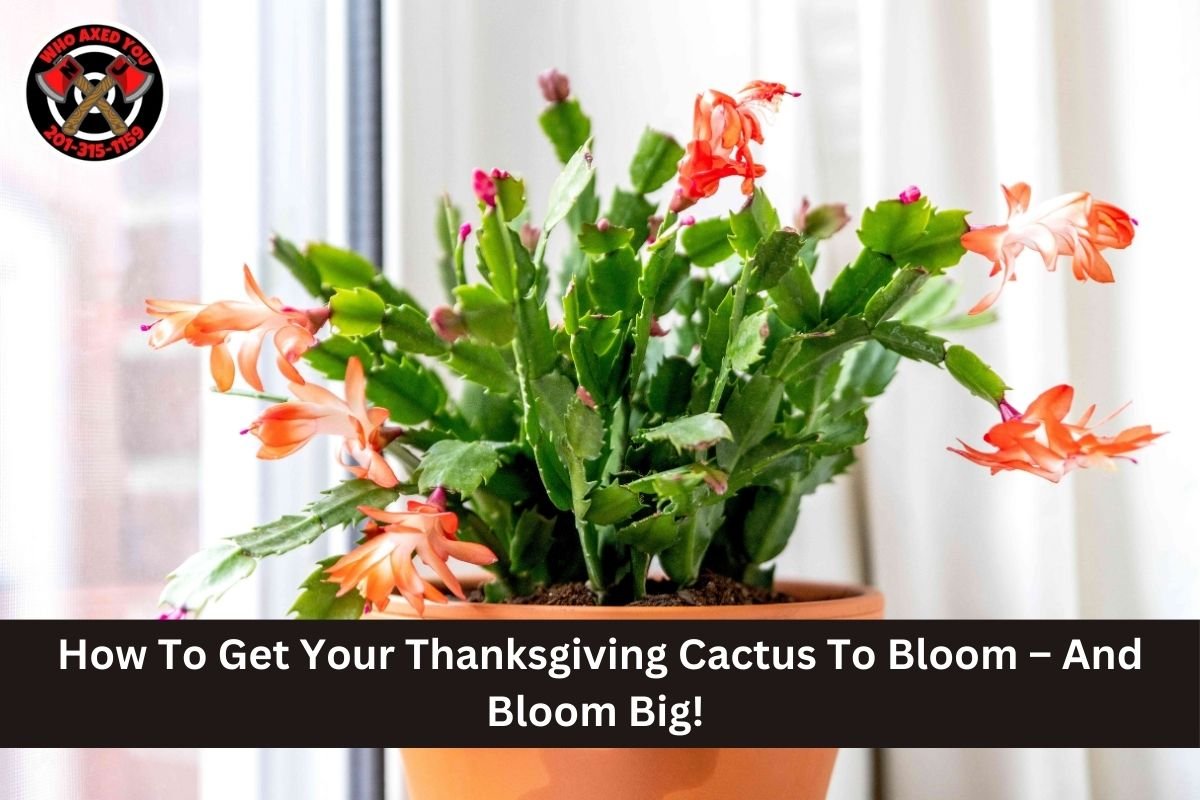How To Get Your Thanksgiving Cactus To Bloom – And Bloom Big! :- In spite of the fact that getting your Thanksgiving cactus (Schlumbergera truncata) to bloom can be a delightfully challenging endeavour, it is possible to create a stunning display of flowers if you provide it with the appropriate care and circumstances. Here is a detailed guide that will assist you in ensuring that your Thanksgiving cactus blooms and blooms heavily.
How To Get Your Thanksgiving Cactus To Bloom – And Bloom Big!
In spite of the fact that it may be a delightful challenge, it is possible to get a stunning display of blossoms on your Thanksgiving cactus (Schlumbergera truncata) if you provide it with the necessary care and conditions. In order to aid you in the blooming and expansion of your Thanksgiving cactus, the following is a complete guide.
Also Read :- 5 Easy Steps To Straighten Curly Hair And Mistakes To Avoid
What You Need to Know About the Thanksgiving Cactus
First and first, it is absolutely necessary to correctly identify your cactus. Cacti that are associated with Thanksgiving have leaf segments that are sharp and serrated, in contrast to Christmas cacti, which have leaf segments that are more rounded. Having this knowledge allows you to customise your approach to care more effectively.
The requirements for light
A bright, indirect light is ideal for the growth of Thanksgiving cactus. During the growing season, which is spring and summer, you should position your plant in a spot that provides it with sufficient light but shields it from direct sunlight, which has the potential to cause the leaves to become scorched. Ideal windows are those that face either north or east. It is possible to stimulate blooming in your cactus by exposing it to darkness for 12 to 14 hours every day for around six weeks throughout the fall season. Through this, the natural shortening of days that occurs in its natural habitat is imitated.
The temperature
The temperature is an important factor in the blooming process. You should keep your cactus in a colder atmosphere during the fall, between 60 and 65 degrees Fahrenheit (15-18 degrees Celsius), so that you can encourage the creation of buds. Temperature variations can cause the plant to get stressed and inhibit its ability to bloom, therefore it is best to avoid placing it near drafts, heaters, or vents.
To irrigate
It is essential to water thoroughly. Despite their preference for soil that is slightly damp, Thanksgiving cacti are susceptible to root rot if they are overwatered. After giving your cactus a full soaking, make sure to let any excess water drain out, and then wait until the top inch of soil feels dry before giving it another watering. To assist in the beginning of the blooming cycle, lower the amount of watering that is applied in the fall; nevertheless, do not allow the soil to become completely dry.
Moisture content
These particular cacti are indigenous to tropical rainforests and thrive in environments with higher amounts of humidity. If you reside in an area that is extremely dry, you might want to think about putting a humidifier or a humidity tray close to your cactus. An other option is to lightly sprinkle the plant; however, it is important to avoid misting it too much, since this can result in fungal disorders.
Feeding it
Your Thanksgiving cactus can benefit from fertilisation, which can encourage healthy growth and blooming. During the growing season, application of a water-soluble fertiliser that is well-balanced should be done every two to four weeks. As the time for blooming draws near in the autumn, make the transition to a fertiliser that is strong in phosphorus in order to stimulate the creation of buds. As soon as the plant starts to blossom, you should stop fertilising it.
The process of repotting and pruning
Through regular pruning, your Thanksgiving cactus will be able to keep its shape and will be encouraged to bloom more efficiently. Following the flowering time, any growth that is lanky or uncontrolled should be pruned back. Not only that, but you can also use these cuttings to propagate new plants. Every two to three years, in the spring, repotting should be performed. You should use a succulent mix or a cactus that has good drainage, and you should make sure that the new pot is not too big, because a cactus that is little pot-bound has a tendency to blossom more.
Moments of Rest
You should give your cactus some time to recover after the blooming season has ended. Reduce the amount of watering and suspend feeding for a few weeks. It is essential for the plant to have this period of rest in order to revitalise itself and get ready for the subsequent blooming cycle.
Providing Support for Re-Blooming
The same pattern should be followed in order to encourage your Thanksgiving cactus to bloom once more. This includes providing sufficient light, allowing temperatures to drop, and ensuring that it is properly watered and fed. Maintaining consistency is essential. It is possible that your cactus requires a little bit more time or you may need to make some little alterations to the way that you care for it.
